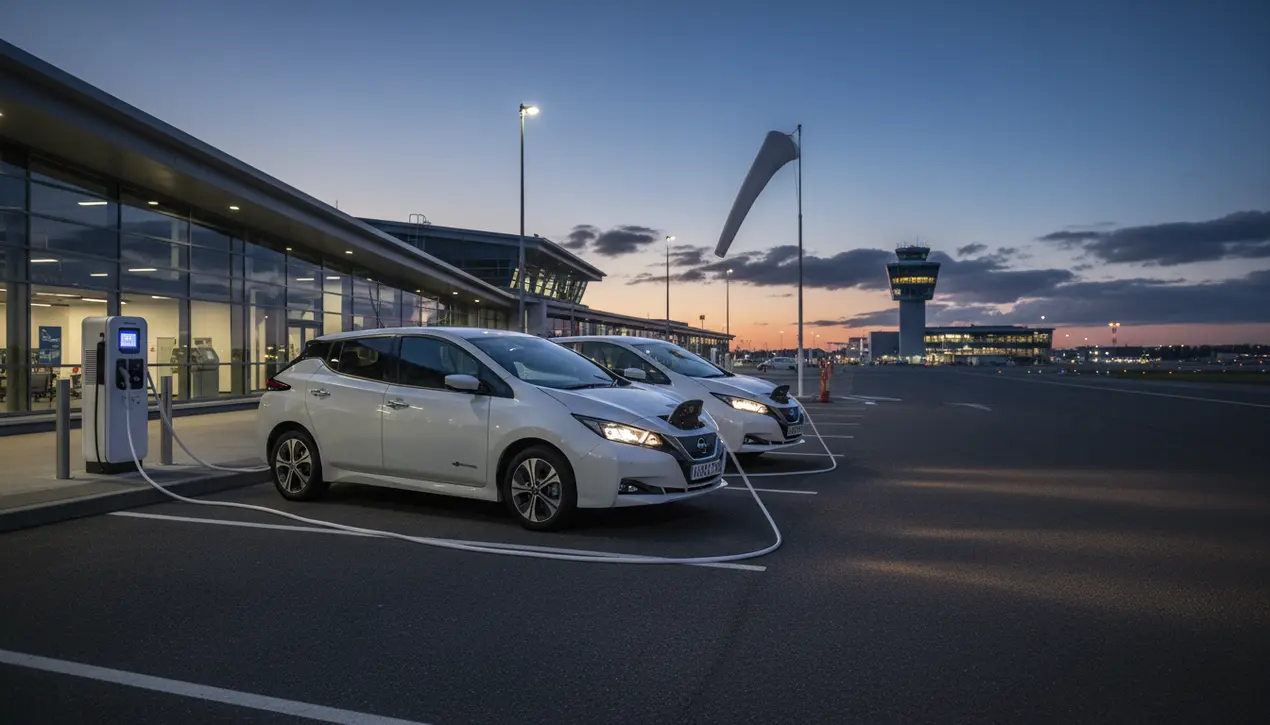
Otherauto & mobilityElectric Vehicles
How Two Nissan Leafs Are Powering a New Era of Airport Resilience
RA
Rachel Adams
3 hours ago7 min read
Move over, electric buses and trucks. A quiet revolution in Vehicle-to-Grid (V2G) technology is taking off at a regional airport, where two Nissan Leafs are proving that resilience isn't about size, but about smart, accessible solutions.This isn't a distant prototype; it's a practical, real-world application using one of the world's most common electric cars to build a decentralized and responsive energy network. The core idea is brilliantly simple: these vehicles are more than just transport—they are bi-directional batteries on wheels.When connected to specialized chargers, they can send stored electricity back into the local grid or a dedicated microgrid during peak demand or, most critically, during a power outage. For a regional airport—a vital hub for remote communities, handling medical flights, goods delivery, and economic links—a blackout is more than an inconvenience; it's a potential emergency.These Leafs serve as a distributed energy resource, providing a crucial buffer to keep essential communications, lighting, and terminal functions running smoothly until main power returns. This strategy is a lesson in ecological pragmatism.Rather than investing in costly, rarely used backup generators that often rely on fossil fuels, the airport is leveraging assets it already owns and has paid for, transforming cost centers into value generators. The Nissan Leaf, with its comparatively modest battery, demonstrates that you don't need a massive power reserve to have a significant impact; you need a strategic one.This reflects broader ecological principles of resource efficiency and adaptive reuse, where the most sustainable solution maximizes the utility of existing resources. The implications for climate resilience are significant.As extreme weather events, intensified by a warming planet, become more common and strain central power grids, the ability for critical infrastructure to operate independently and draw power from a distributed network of EVs could redefine community preparedness. Envision a future where every municipal building—libraries, community centers, fire stations—is supported not by a single, large generator, but by a fleet of shared or public service EVs, creating a resilient, web-like power structure that is far less susceptible to single points of failure.This airport's pilot program is a small-scale test of that future, a proof-of-concept that democratizes energy security. Challenges persist, from standardizing bi-directional charging technology across automakers to establishing favorable utility rates that compensate vehicle owners for their grid services.But the image of two unassuming Nissan Leafs silently powering a gateway to the skies is a powerful symbol. It heralds a move away from centralized, vulnerable systems toward a more agile, distributed, and ultimately stronger model for keeping our communities connected and secure in an unpredictable world.
#featured
#Nissan Leaf
#V2G
#airport resilience
#electric vehicles
#energy management
#vehicle-to-grid
Stay Informed. Act Smarter.
Get weekly highlights, major headlines, and expert insights — then put your knowledge to work in our live prediction markets.
Comments
Loading comments...
© 2025 Outpoll Service LTD. All rights reserved.